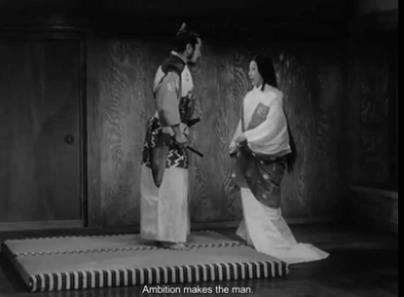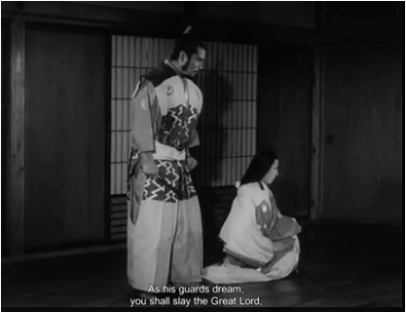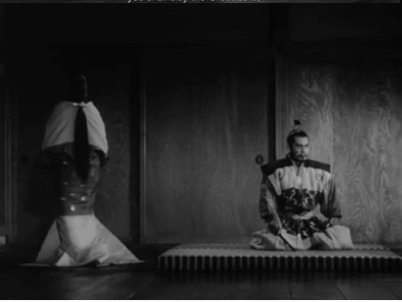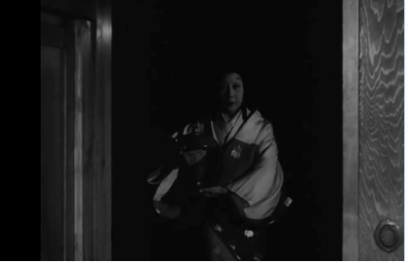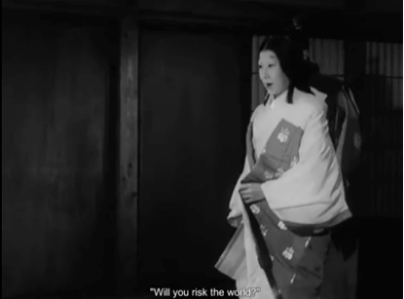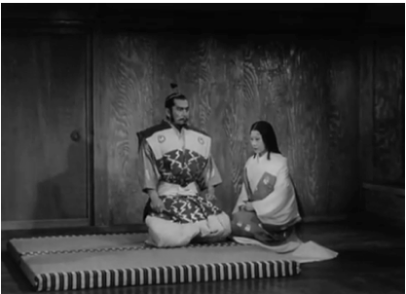Throne of Blood (1957) By Akira Kurosawa – Sequence Analysis
http://putlocker.bz/watch-throne-of-blood-online-free-putlocker.html
39:16 – 43:07
This sequence is from one of the most significant scenes of the film where Isuzu Yamada who plays Lady Washizu, the wife of Taketoki Washizu channels her ambitious and manipulating nature into convincing her husband to murder his fellow Samurai comrade in order to gain power over the Castle. Lady Washizu ends up over powering Taketoki which results in the killing of the guards and Yoshiteru (the other Samurai who shall inherit the castle). Through Kurosawa’s powerful direction, subtle body language and dialogue manage to capture the relationship between man and wife and the power Lady Washizu has over her husband. In this sequence, sound is also used metaphorically to set the tone of tension and suspense. The slow pace of the sequence also helps amp up the mood of the situation and builds suspense since this scene could actually be perceived at the turning point or peak of the storyline. The sequence is very significant in the continuation of the film since it captures the main themes of the storyline – power, envy and ambition all brought to life by the Lady Washizu’s enticing performance.
As part 6 of “The Story of Film” explores the concepts of melodrama in the 1950s, this sequence from Throne of Blood attacks the concept of melodrama in a more subtle and conceptual manner. A melodrama can be defined as a sensational dramatic piece with exaggerated characters and exciting events intended to appeal to the emotions and this sequence does exactly that through effective body language and subtly melodramatic dialogue which triggers suspenseful emotions in the audience.
Dialogue
Kurosawa uses dialogue in the beginning of the sequence to establish the stance of power between the two characters. Lady Washizu uses wording such as “Ambition makes the man” where she implies that Taketoki must complete the deed in order to be perceived as the alpha male. This type of dialogue throughout the sequence also defines Lady Washizu’s character as psychologically manipulative and aggressive yet always maintaining her lady like image.
Kurosawa also uses old-fashioned vocabulary syntax and dialogue such as “as his guards dream. You shall slay the great Lord” which puts the film into its natural setting and establishes the atmosphere of a traditional Japanese kingdom.
Composition
In the beginning of the sequence, Lady Washizu and Washizu himself are generally on the same level in terms of blocking and positions. However, as Washizu begins to intently listen to his wife, he slowly starts to sit down sort of as a sign of surrender as Lady Washizu begins to rise and walk out towards the guards. Kurosawa decided to film this sequence in the home of the Washizus which creates a sense of isolation and privacy from the rest of the castle.
Kurosawa uses this play on composition with the characters to challenge gender roles and power similar to the way Shakespeare intended these two characters to come to life. The interesting composition compliments the striking body languages which truly define the play on power and more specifically, the power a woman can have over the protagonist, a man.
Lighting
Kurosawa plays on the symbolic concepts of light and dark with this sequence through Lady Washizu. Towards the end of the sequence as Taketoki Washizu agrees to the deed, Lady Washizu walks out of the room to drug the guards and as she walks out, she fades into black. This black symbolizes the dark deed she’s about take part in. As she returns, she comes out of “the darkness” and come back into the light which today would be seen as sort of a cliché as the dark represents evil and the light, goodness however back then, symbolism like this through lighting would have been ground breaking.
Sound
In this sequence, Kurosawa hardly uses any musical soundtrack which puts emphasis on the diegetic sound only. Since there hardly isn’t any music, the audience is prone to pay more attention to the detail of the sounds and therefore contributes to the themes of isolation and privacy in the room, which builds suspense and establishes the mood. Specifically, Kurosawa puts emphasis on the sound of Lady Washizu’s dress as she walks around the rooms and especially as she walks out to drug the guards. The sound Lady Washizu’s dress makes can almost be describes as the sharpening of a knife which is metaphorically exactly what this dialogue between her and her husband is about – the preparation for slaughter. In terms of more diegetic sound, towards the end of the sequence, the sound of the birds chirping is used as a tool by Lady Washizu to manipulate her husband as she says “what do you hear in that bird’s cry? ‘ Will you risk the world’ so it says to me”
